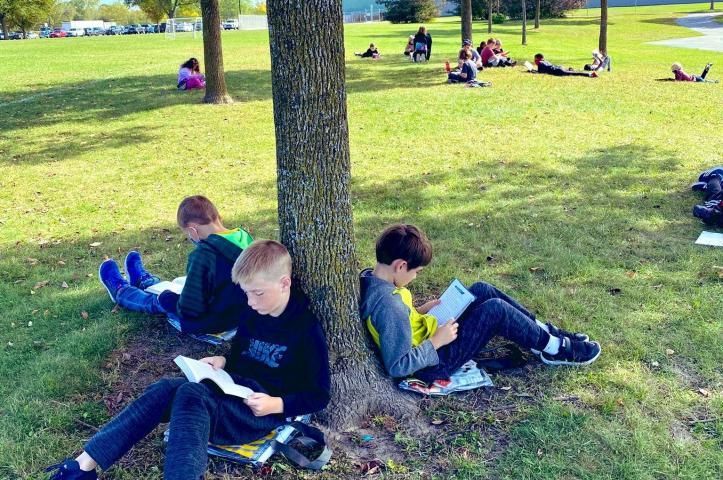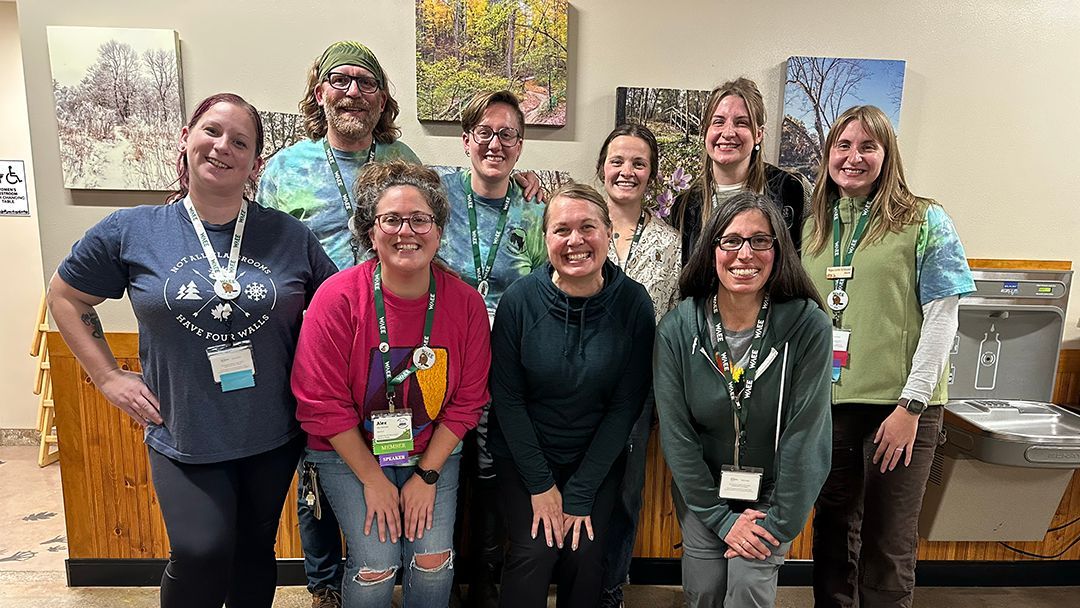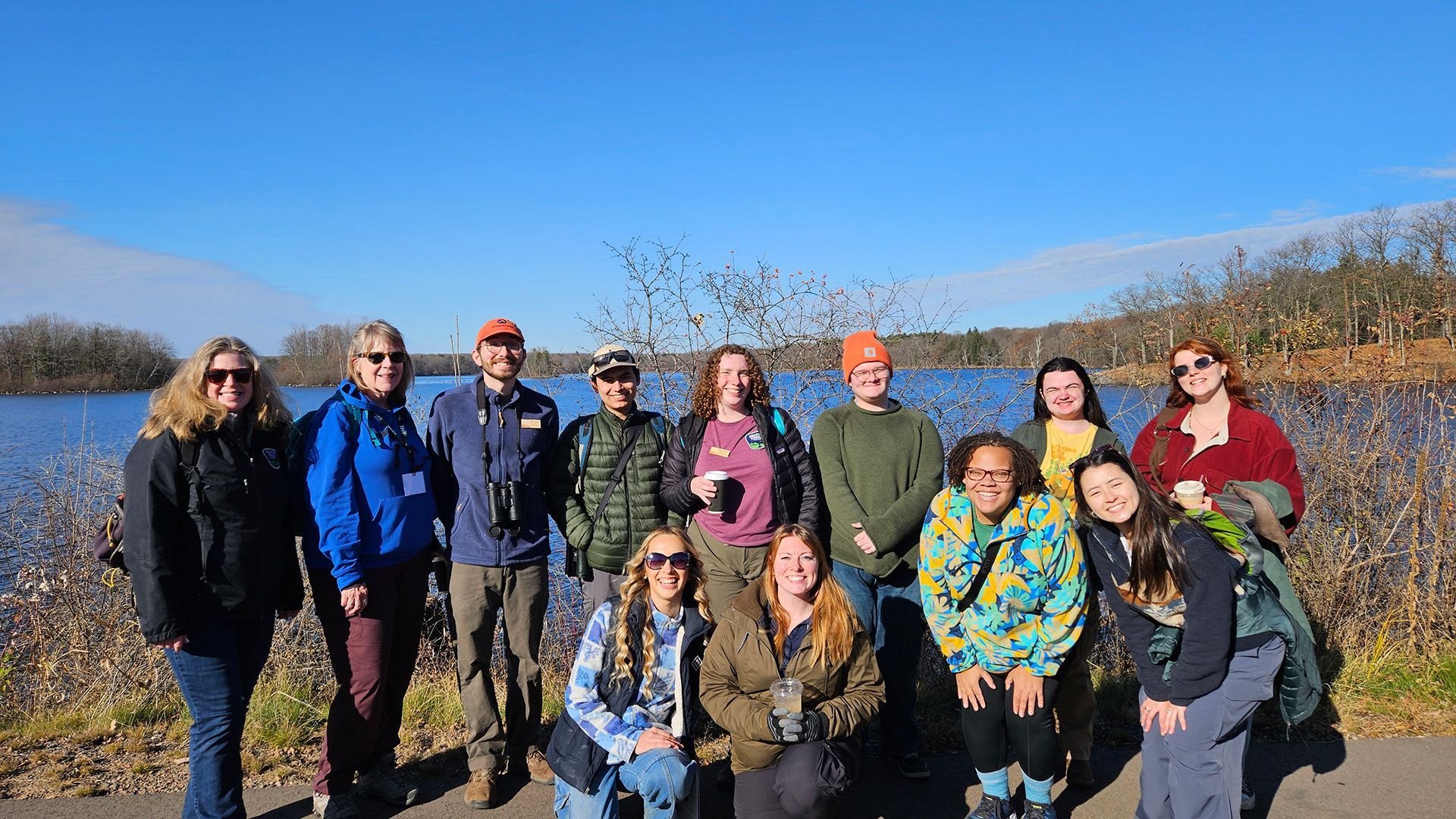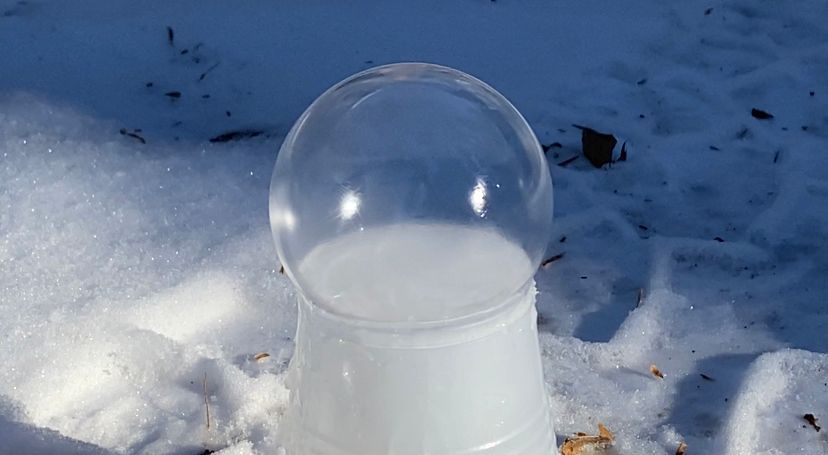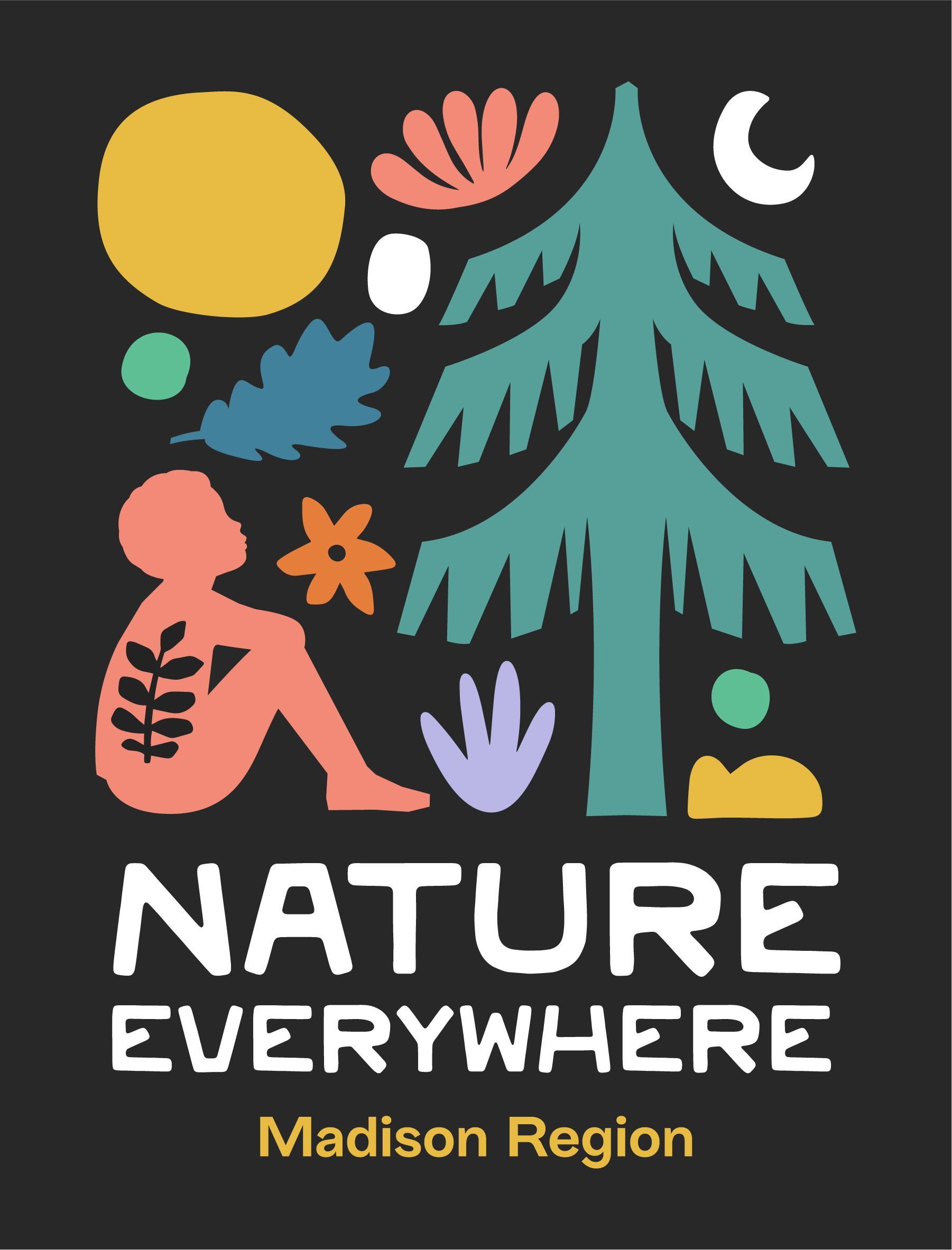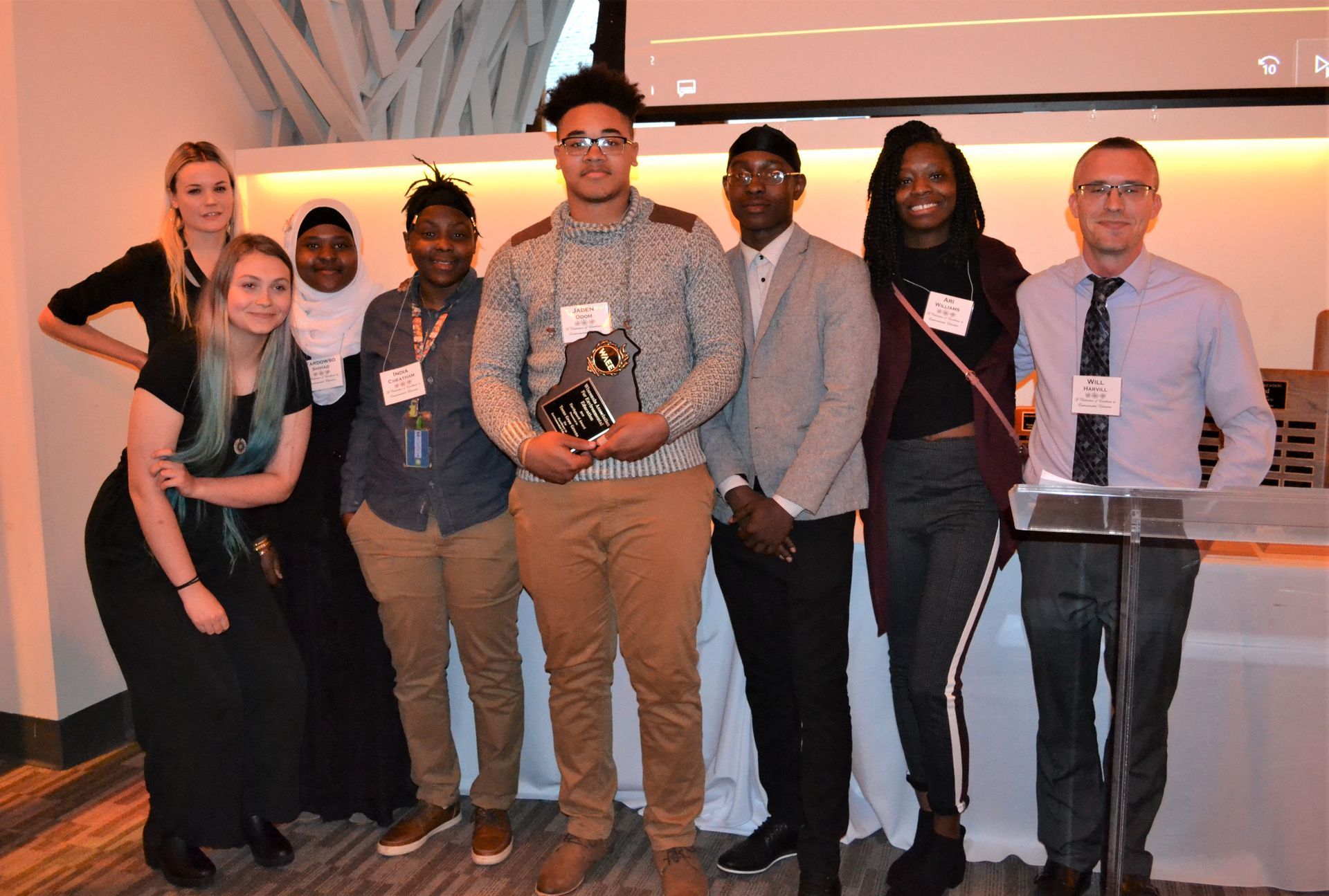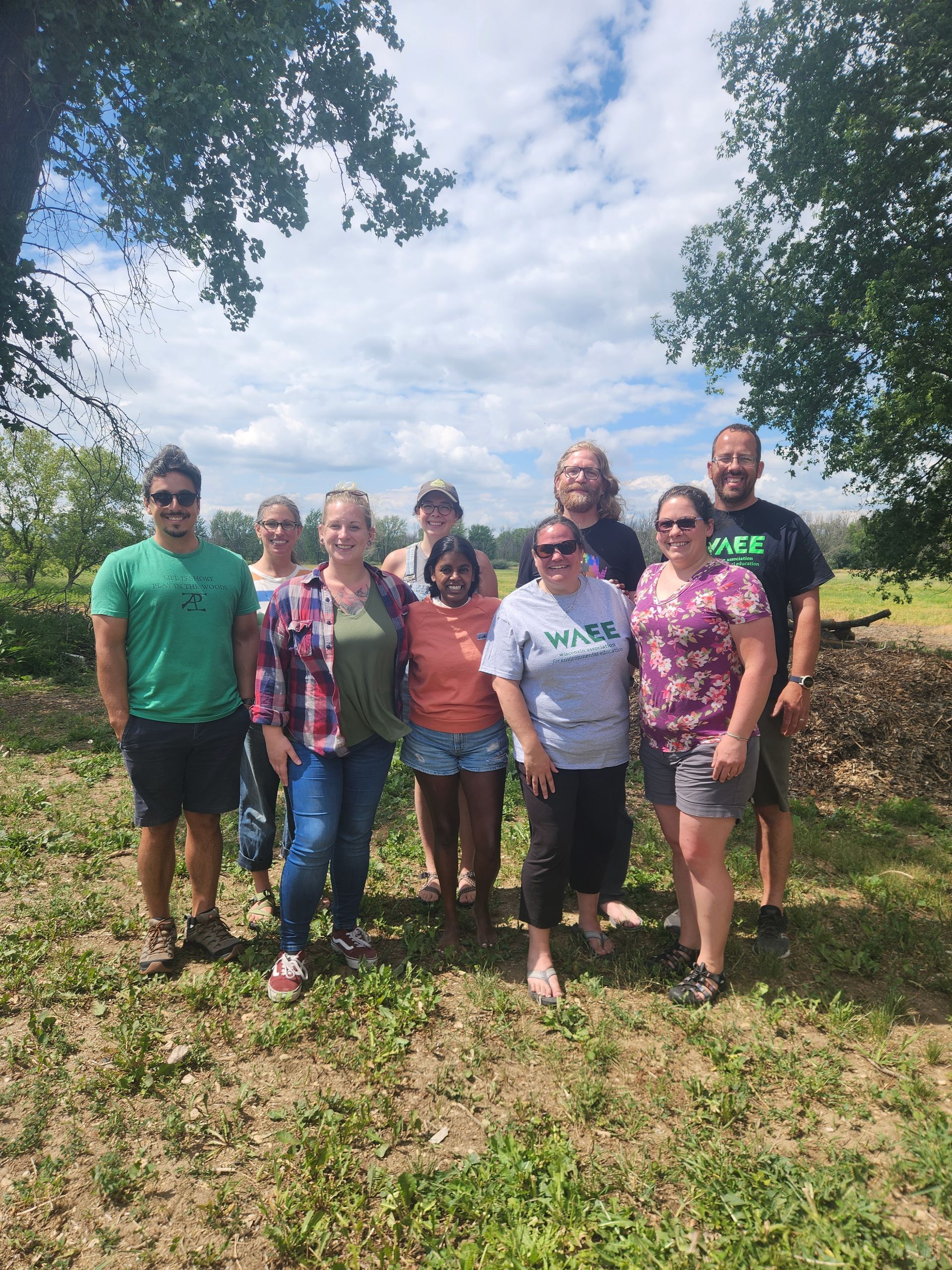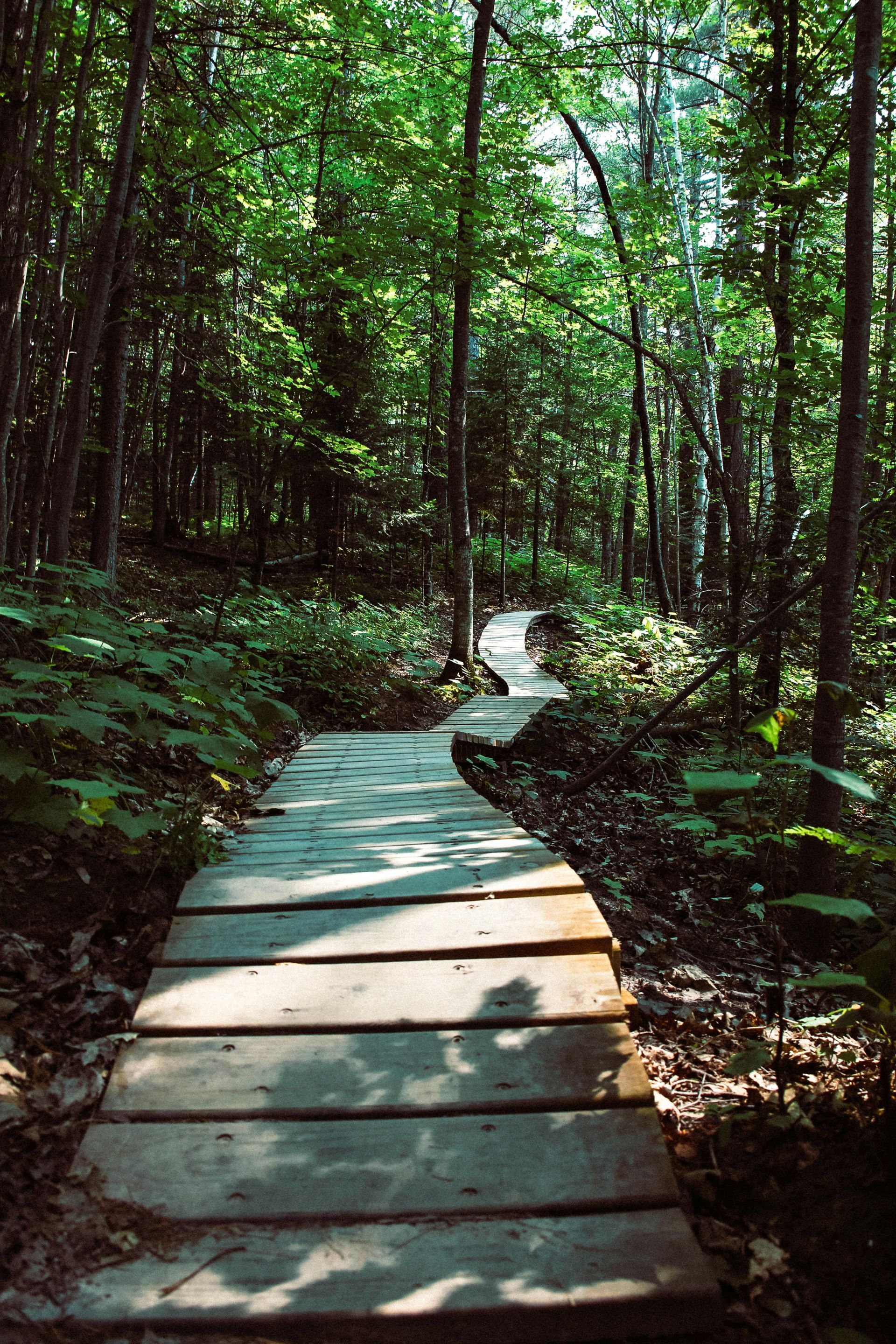An Interview with the School District of Waukesha
Interviewer: I saw the sit-upon demo in your newsletter, and I loved it! It's short, so well-made, and all the important directions. Was your team excited to work on these multimedia projects for your weekly newsletter?
Emma: It took everyone a bit of time to adapt, at first. Our team is pretty diverse as far as skills when it comes to making videos and other types of media, so there was a learning curve, but as we got started, people found a lot of enjoyment in taking what we’ve done and creating something totally new.
Laureanna: The space that we were given to follow our interests was really the strength of it. We have people on our team who are really good at art and are able to do things in that avenue relating to environmental education. I do more things with writing, so I follow that one. We had people incorporating different aspects into environmental education, doing things with butterflies or involving their kids. Basically, as many different aspects that we could incorporate into environmental education as possible, you know, whether it’s hiking or birding, or whatever. The freedom of topic really made it interesting for everybody.
Interviewer: How in advance do you ask folks for content? Do you send regular reminders? You do so many newsletters!
Emma: Our team knows that I send newsletters out every Thursday. When we started, it was just kind of open-ended, and if people had projects that they wanted to work on, there was a deadline to get them to me by Wednesday at noon. People were pretty good about giving me a heads up if there was a project they were going to be working on for the next week, so I could hold space for that in the newsletter. It has remained pretty open-ended! If there was a week with a lot of empty space, I might have reached out to people for content, and they were always really responsive about helping out.
Erica: And I will say we’re anticipating pulling back on newsletters as things go back to normal, since there's less need for content.
Interviewer: That makes sense, plus, you now have the database of a whole year of content!
Erica: Yes! And I should add that Thursdays were an intentional day, because we wanted to make sure that teachers had time to plan for the next week. You don’t ever send anything out on Friday because no one will read it!
Interviewer: I know you also include other forms of content in your newsletters. How do you know what content you can share?
Emma: Our district has marked content that’s watchable for students, so we choose videos that are already OK’d.
Erica: In terms of copyright, obviously there’s only a certain percentage of a book you’re allowed to show. We’ve all learned really well how to search creative commons photos on Google! And we use a lot of our own content to alleviate that issue. For videos, we always make sure to watch all the way through! I usually go and ask our library media team, because they know the ins and outs.
Interviewer: Is your program focused 100% on teachers? Or do you play around with multiple audiences?
Erica: The newsletter is focused on teachers, although last spring we were focused on families as well since everyone was home. Our program itself is focused mostly on students since we see about 10,000 students a school year, when they are in session. It’s just this year that we’ve shifted almost completely to teachers.
Interviewer: There's a lot of content out there, and yet I often hear from educators who say they can't find what they need. You focus on resources specifically for your district—do you think that’s the best strategy?
Laureanna: I work with the Wisconsin Center for Environmental Education as well and it’s a conversation we’ve had many times. We push out energy education, forestry education, etc, and not everybody does them because it’s hard to figure out where it fits within curriculum. The idea of partnering with school districts across the state has been talked about many, many times—asking, can we dive into your curriculum, can we help you figure out how to match lessons about environmental education into what you already teach. Waukesha is a model for how this is done, because this is what we do. And I feel like it works really well in our district.
Erica: Yeah. So, we know literacy rules our world, especially in K–8, so we start with literacy units and their themes. Take Kindergarten, their first theme is community, so we riffed on that and connected it directly to an NGSS standard. If you can find those performance expectations and show how the performance expectations are all being addressed in this one unit, it helps them. But we also learned that if you give a teacher a one or two-day lesson it doesn’t necessarily make sense for how it fits in, so we started developing two-week mini units for them, so they can really see how it fits into their curriculum.
Interviewer: Something I’ve heard from groups that do environmental education, is that if they’re in charge, teachers will say, “Oh, good! You’ll take care of this and I’ll do my own thing here, perfect.” I’m curious about your transition working 100% with students to passing on the content to teachers and encouraging them to run with it. How was the response? How did you encourage a positive response?
Emma: I think in our district we saw a lot of principals encouraging teachers to take their classes outside this spring and fall. We felt able to jump in there and say, “We know that this is the reality for you right now, and we know you’re being asked to take your classes outside, so we have these ideas and resources to support you.” I think jumping into that avenue was a good way to make teachers feel supported in what they were being asked to do.
Erica: If you give people free things, they will come! We provided a huge number of sit-upon kits and bird feeders. Emma was able to work with the forestry department to bring cut-up logs to schools who wanted outdoor classrooms. Since we weren’t able to bus in kids like normal, we were able to free up some funds to do this. When we heard kids had to go outside for mask breaks, we knew that was our time to say, “Okay. Let’s shine, let’s show them what they can do.”
Laureanna: Yeah, we really tried to focus on teaching outdoors—not necessarily teaching about the outdoors. You don’t have to have a background in environmental education to take your students outside and just enjoy the mental health aspects of being out there.
And I do think it depended on the teacher as well. If it was someone who saw value in it, then they were reaching out to us or taking us up on these opportunities. And we always tried to put out there, “Hey! We’re here! Don’t forget about us! How can we help you?”
Interviewer: I’d love to close with reflections from each of you on this past year. Amidst COVID-19, there have been some great successes: teachers have been able to witness for themselves the benefit of outdoor classrooms and that experience is irreplaceable. I’m curious about how your pivots strengthened your program, and how it has changed how you will move forward.
Emma: I can start. The thing that I’ve been most excited to see is the creativity that’s come from our team, and our ability to diversify the type of material that we’re offering. Since we shifted so much of our content to virtual, we’ll be able to move that forward and have tools for students that can’t get outside or are home sick on the day that they might have a field experience.
Laureanna: I’ll jump off of that one! It allowed us to be more cohesive as a staff. It allowed us to get to know each other better, get to know our strengths better. We were able to collaborate more often and be flexible in our thinking.
Erica: The amount of technology use and understanding that our staff has had this year has been unbelievable. Some of the videos that our staff have created are amazing, and I’m excited to see how we continue using those as resources. The ideas just keep getting bigger!
But what I have learned a lot this year is that I’m really happy that we have our mission of not necessarily creating environmentalists, but creating students and families who love nature. Sure, they might not remember the names of the critters they pull out of the river, but they know they had fun, and they know it’s important to keep the river clean. That has been our biggest shift over the past ten years—moving from content learning to experiencing nature. Content is a benefit.
This interview was conducted virtually in March 2021 and has been edited for brevity.
A District-led EE Program 45 years Running
An interview by Elisa Mattson, originally published by NAAEE
The School District of Waukesha is, frankly, amazing. The district-led EE program has been running for 45 years now, beginning with the inspiration and investment of one teacher. Although the team has grown to include 11 members, there is still one staff member who has been with the program since the very beginning.
With the onset of COVID-19 in the spring of 2020, the EE team brainstormed new ways to support teachers and make use of their time. They decided to transform their sporadic update newsletter into a weekly content-driven newsletter that would go on to support hundreds of district teachers, as well as spark the interest of many more, including outside districts, an international audience, and yours truly. Some highlights for me have been bird bingo, a digital owl pellet dissection game, and all the corny science jokes. Their newsletter archive(link is external) is available for anyone to peruse, and I thoroughly recommend it.
I had the wonderful opportunity to speak with with three staff members of the School District of Waukesha's EE team: Erica Yoss, the K–12 Science and EE Coordinator, Emma Koeppel, Site Manager, and Laureanna Raymond-Duvernell, one of the nine EE teachers on staff. I'm so grateful for their advice-filled and open-hearted responses. Please read, enjoy, and share if you find their words helpful.
